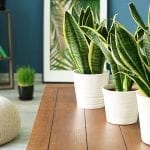
Top 9 Common Cleaning Mistakes to Avoid
A clean, fresh-smelling home is at the top of everyone’s list, but what if you’ve missed a few spots? Do you wonder if you’re using the right cleaner on your granite kitchen countertop?
See below for the top 9 cleaning mistakes to avoid and what to do instead.
1. Skipping the Directions
Remember your grade school report card with the “Follows Directions” checkbox? If you’ve used a household cleaner for years, it’s easy to forget the label’s directions.
Plus, manufacturers change their products and directions for use from time to time. Some household products take longer to clean– some work on a particular surface type – and some may be too abrasive for some areas.
2. Using the Wrong Cleaning Product
It’s easy to assume that a single cleaner is safe to use on almost any surface, but it’s not true. See below for a list of cleaning what-not-to-dos:
Cleaning hardwood floors – Do not try using bleach, ammonia, lemon oil, Tung oil, or furniture spray on hardwood floors as they can dull the finish, which attracts more dirt. Only use a hardwood floor cleaner recommended by your floor manufacturer.
Cleaning natural stone – Harsh, chemical-based cleaners will damage natural stone surfaces. The product will seep into the stone surface staining and mar the finish. A gentle soap and water mix works best for cleaning up messes on natural stone.
Cleaning stainless steel and copper – Do not try using bleach or ammonia on stainless steel or copper surfaces as it can damage the surface, causing unsightly stains. When cleaning stainless steel, do not use abrasive cleaners, abrasive sponges, or scouring pads – scratches may result.
Try using a soft cloth and a manufacturer-recommended product to clean stainless steel.
As this is one of the easiest cleaning mistakes, always check the manufacturer’s manual and read the product cleaning label before cleaning indoor surfaces.
An important safety note: It can be dangerous to mix cleaning products. Specific products that are safe when used alone can result in hazardous fumes when combined with other cleaners.
Read the label to learn which products your cleaner shouldn’t be mixed with. For more information on finding the right cleaning product for your cleaning job, click here.
3. Starting at the Bottom
Sweeping the floor and then polishing the bookcase might seem like a good idea, but dust moves downward. Now, the dust from the furniture has settled on your just-cleaned floor!
Always clean from top to bottom – literally. Begin cleaning at the highest point, such as the light fixture, then move to the countertop and finish by vacuuming the floor. This is one of the top cleaning mistakes to avoid.
4. Pushing to Get it Done
It’s tempting to move fast – get the cleaning out of the way and then move on to more pleasurable activities. But, when you rush, you may be tempted to clean haphazardly missing spots. If you’re short on time, pick one room, slow down, take your time, and do a thorough job.
The next day, choose another room and repeat it.
5. More Isn’t Better, Really!
It’s easy to think that the more product you use, the better it will work, but commercial cleaners are formulated to do the job with the amount indicated on the label. And most of the time, you’ll need a modest amount of product.
Adding too much product will leave you with extra work – more wet mess to wipe up. If you have a very grimy spot, apply the recommended amount, then reapply if necessary.
To ensure you’re not using too much product, spray a small amount on a cloth and then rub it on the surface. You’ll use less product and still get the job done!
6. Don’t Forget to Empty the Vacuum Cleaner
Does your vacuum emit a “burnt dust” smell? Has it stopped picking up crumbs as well as it used to? Your vacuum bag or dust container may be full.
An about-to-bust vacuum bag will smell because of a lack of airflow, and a full bag or container will hamper the sweeper’s ability to do its job. So check the bag or empty the dust container before you start. And if your sweeper has a filter, clean it regularly.
7. Washing Windows on a Sunny Day
It makes sense to clean exterior windows on a bright, sunny day. It’s nice outside, and the dirt is easier to see, right? The truth is that direct sunlight raises the temperature of the window glass.
This will cause the product to evaporate quickly – which means streaky windows. It’s best to clean your windows on a cloudy day and then enjoy the view when the sun returns.
For more helpful tips on cleaning windows, click here.
8. Wipe the Right Way
Wiping a countertop back and forth moves the dirt from side to side. Moving the sponge in an “S” or “V” motion across the surface is best. This random motion helps the sponge pick up grime more easily. Rinse your sponge often.
9. Don’t Mix Cleaners
Cleaning 101– One of the most important (and possibly dangerous) cleaning mistakes to avoid is combining one household cleaner with another. Make careful note of the products below that you should never use together:
Drain cleaner + drain cleaner: Drain cleaners are chemical-based and corrosive. Mixing brands may damage your plumbing, or an explosion may occur.
Bleach + Vinegar: Bleach and vinegar mixed create a chlorine gas which causes coughing and eye irritation.
Bleach + Ammonia: This bad combo forms a chloramine gas when used in tandem. Shortness of breath and chest pain can result.
For the health and safety of you and your family, avoid mixing the above cleaning products.
Take note of these essential cleaning mistakes to avoid, and you and your loved ones will enjoy a healthy and happy home.
Interested in home organization tips? Click here.













